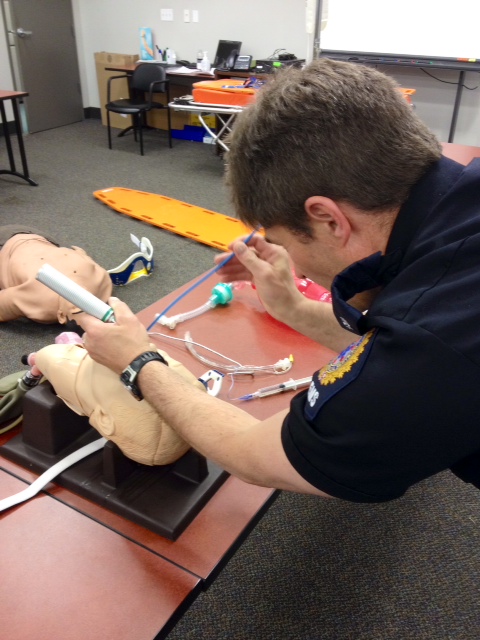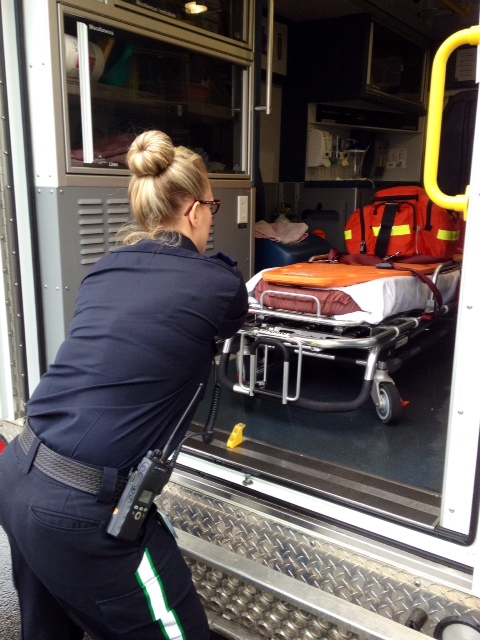CALGARY- They wear bulletproof vests, dodge bodily fluids on a regular basis, and are trained to execute highly-skilled, life-saving techniques while riding the back of a bumpy ambulance. They’re paramedics, and they’ve given Global News a behind-the-scenes look at the challenges medical professional face every day.

As part of Media Medic Day, reporters were invited to ride along with crews to a mock call, as well as try their hand at procedures like how to intubate or stabilize a patient. While the skills involved are impressive enough, it’s important to keep in mind that they’re usually done in the back of a fast-moving vehicle.
When the situation is dire enough, extra crews are brought in to help.
“We can have up to three paramedics in the back treating a very critical patient while one person drives,” Brideaux says. “It’s a good thing that we have that help available in the back, because we can be doing a lot for that patient while they’re en route to the hospital.”
In a huge change over past decades where EMTs were merely considered ‘ambulance drivers’ to get patients to doctors, they’re now able to provide care as soon as they arrive on scene.
“There are many things a paramedic may also be able to diagnose or recognize, even if we can’t reverse or treat, such as certain underlying causes. Of course we can’t cure diabetes in the back of an ambulance, but we can reverse low blood sugar, we can recognize if someone’s having a severe heart attack.
“Similarly, if someone’s having a severe stroke, we can shave minutes –which can be a life-changing thing for a patient—off of their heart attack, their stroke, their seizure problem, and save their life consequently.”
Brideaux adds one of the biggest challenges is quickly determining how they can best help the patient.
“What we’re called for and why we may take somebody to the hospital can be quite far apart. Someone may call because they felt they’re having indigestion or a stomach problem, but we actually determine it’s a serious heart problem. Someone may minimize their injury and determine that they don’t really want our help, and in fact it could be a life-threatening problem that we need to take them to a hospital for.”
Currently, paramedics go to school for two years to get their diploma. It takes an additional four years to complete the education and pre-requisites required, prior to going to paramedic school.
- Capital gains changes are ‘really fair,’ Freeland says, as doctors cry foul
- Ontario doctors offer solutions to help address shortage of family physicians
- ‘Dangerous message’: Experts slam anti-sunscreen claims circulating online
- ‘Trying not to die’: Tourism operators loaded with debt despite rising demand

















Comments